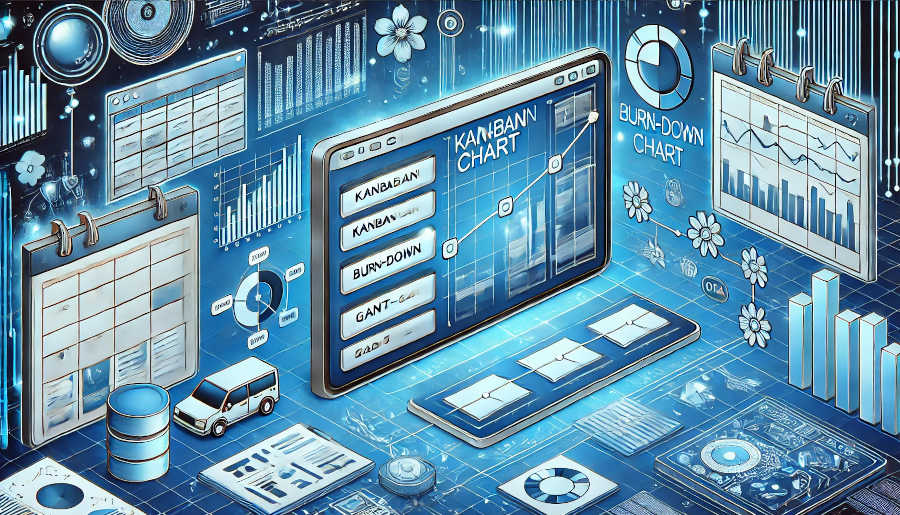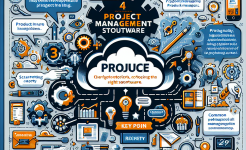TR (Technical Review) is an essential part of the product development process in many industries, especially in high - tech sectors. It serves as a crucial checkpoint to ensure that the technical aspects of a project are on the right track. Project delivery quality, on the other hand, encompasses various elements such as product functionality, reliability, and timeliness. Understanding the relationship between TR review and project delivery quality is of great significance for organizations aiming to optimize their product development processes.
A well - conducted TR review can identify potential technical issues early in the project lifecycle. By thoroughly examining the design, architecture, and technical specifications, teams can catch problems like compatibility issues, performance bottlenecks, or design flaws. This early detection allows for timely corrective actions, which in turn can prevent these issues from escalating and affecting the overall quality of the final product. Moreover, TR reviews can also enhance communication among different stakeholders, including engineers, designers, and project managers. This improved communication can lead to a more comprehensive understanding of the project requirements and goals, contributing to better project delivery quality.
However, the relationship between TR review and project delivery quality is not always straightforward. There are many factors that can influence how effectively TR reviews translate into high - quality project delivery. For example, the expertise and experience of the review team, the depth and breadth of the review criteria, and the organization's culture regarding feedback and improvement all play important roles. In this article, we will explore these aspects in detail to gain a more in - depth understanding of the relationship between TR review and project delivery quality.
The Role of TR Review in Identifying Technical Risks
TR review acts as a risk - identification mechanism in the project development process. During a TR review, experts in relevant fields carefully assess the technical components of the project. They analyze the proposed technologies, algorithms, and system architectures to determine if there are any potential risks that could impact the project delivery quality.
One of the key areas where TR review helps in risk identification is in the evaluation of new technologies. When a project incorporates new or untested technologies, there is a higher chance of encountering unforeseen problems. A TR review can assess the maturity of these technologies, their compatibility with existing systems, and the availability of technical support. For instance, if a software project plans to use a new programming language, the TR review team can evaluate whether the development team has the necessary skills to work with it, and if there are any known issues or limitations that could affect the software's performance or functionality.
Another aspect is the identification of design - related risks. A thorough TR review can uncover flaws in the system design, such as poor modularity, lack of scalability, or inefficient data flow. These design issues can lead to problems during the development process, such as increased development time, higher costs, and lower - quality end - products. By identifying these risks early through TR review, the project team can make appropriate design changes to ensure a more reliable and high - quality project delivery.
Impact of TR Review on Product Functionality
The functionality of a product is a core aspect of project delivery quality. TR review has a significant impact on ensuring that the final product meets the required functionality standards.
During the TR review, the team examines the product's functional requirements in detail. They verify that the design and implementation of the product align with these requirements. This includes checking if all the specified features are present, if they work as expected, and if there are any conflicts or overlaps between different features. For example, in the development of a mobile application, the TR review team will ensure that all the user - interface elements, such as buttons, menus, and forms, function correctly, and that the underlying algorithms for tasks like data processing and storage are working as intended.
TR review also helps in improving the usability of the product. By evaluating the user - experience aspects during the review, the team can identify areas where the product may be difficult to use or navigate. This could involve issues such as complex workflows, unclear instructions, or inconsistent user - interface design. By addressing these usability issues during the development process, based on the feedback from the TR review, the project can deliver a more user - friendly product, which in turn contributes to higher project delivery quality.
Moreover, TR review can ensure the interoperability of the product with other systems or components. In many cases, products need to interact with external systems, such as databases, third - party APIs, or other software applications. The review team can assess whether the product's design allows for seamless integration with these external elements. This is crucial for the overall functionality of the product, as any interoperability issues can limit its usefulness and reduce the quality of project delivery.
Influence of TR Review on Product Reliability
Product reliability is another important dimension of project delivery quality, and TR review plays a vital role in enhancing it.

Reliability refers to the ability of a product to perform its intended functions under specified conditions and for a specified period of time. A TR review can evaluate the product's design for reliability from various aspects. For example, it can assess the use of reliable components and materials. In a hardware project, the review team will check if the selected electronic components have a proven track record of reliability, and if the materials used in the product's construction can withstand the expected environmental conditions.
The review also focuses on the product's fault - tolerance capabilities. It examines whether the product is designed to handle errors and failures gracefully. This could involve features such as error - handling mechanisms, redundant systems, and self - diagnostic capabilities. By ensuring that the product has adequate fault - tolerance, the TR review helps to increase its reliability. For instance, in a critical software system, the ability to recover from a system crash or handle data corruption without significant loss of functionality is essential for reliable operation.
In addition, TR review can consider the product's maintainability, which is closely related to its reliability. A product that is easy to maintain is more likely to remain reliable over time. The review team can evaluate factors such as the modularity of the design, the availability of documentation, and the ease of accessing and replacing components. By promoting good maintainability during the development process through TR review, the project can deliver a more reliable product, thus improving the overall project delivery quality.
Factors Affecting the Effectiveness of TR Review in Ensuring Project Delivery Quality
Although TR review is an important tool for enhancing project delivery quality, several factors can affect its effectiveness.
The expertise of the review team is a crucial factor. A review team composed of experts with diverse and in - depth knowledge in relevant technical fields is more likely to conduct a comprehensive and accurate review. If the team lacks the necessary skills or experience in certain areas, they may miss important technical issues or fail to provide relevant and useful feedback. For example, in a complex aerospace project, a review team without sufficient knowledge of aerodynamics and advanced materials may not be able to fully assess the design's feasibility and reliability.
The review criteria also play a significant role. Well - defined and comprehensive review criteria can ensure that all important aspects of the project are evaluated. If the criteria are too broad or too narrow, the review may not be effective. For instance, if the review criteria for a software project only focus on code syntax and not on software architecture and security aspects, many potential issues may go unnoticed, affecting the project delivery quality.
The organization's culture regarding feedback and improvement is another factor. In an organization that values open communication and is willing to act on feedback, TR reviews are more likely to be effective. If there is a culture of resistance to change or if feedback is not taken seriously, the findings from the TR review may not be translated into actual improvements in the project, thus undermining the relationship between TR review and project delivery quality.
Conclusion
In conclusion, the relationship between TR review and project delivery quality is complex and multi - faceted. TR review serves as a critical mechanism for identifying technical risks, ensuring product functionality, enhancing product reliability, and ultimately improving project delivery quality.
By effectively identifying technical risks through TR review, project teams can take proactive measures to address potential issues before they escalate, reducing the likelihood of project delays, cost overruns, and quality problems. The impact of TR review on product functionality ensures that the final product meets the user's requirements and provides a satisfactory user experience. In terms of product reliability, TR review helps in evaluating and improving various aspects such as component selection, fault - tolerance, and maintainability.
However, to fully realize the benefits of TR review in improving project delivery quality, organizations need to address several factors. These include ensuring that the review team has the necessary expertise, establishing well - defined review criteria, and fostering a culture that values feedback and continuous improvement.
In today's highly competitive business environment, organizations that can effectively manage the relationship between TR review and project delivery quality are more likely to develop high - quality products, gain a competitive edge, and achieve long - term success. Therefore, understanding and optimizing this relationship should be a top priority for any organization involved in product development projects. By investing in proper TR review processes and addressing the influencing factors, organizations can enhance the overall quality of their project deliveries and drive business growth.
ARTICLE TITLE :Research on the relationship between TR review and project delivery quality ,AUTHOR :ITpmlib

















